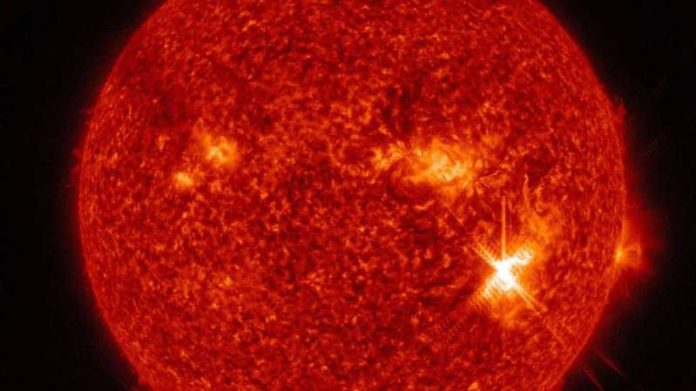A powerful explosion occurred on the Sun on the night of February 18, according to information provided on the website of the Laboratory for X-ray and Solar Astronomy of the Space Research Institute of the Russian Academy of Sciences and the Institute of Solar Energy.
The “X2.2” explosion occurred shortly before midnight, and was preceded by several weak “C” category explosions, reports Al-Rai daily.
Previously, the Sun was unusually active in late December 2022 and early January 2023. After that, several C-class explosions occurred on the star.
Scientists described the increase in solar activity observed in late 2022 and early 2023 as the strongest since 2017. By mid-January, this period ended, and scientists attributed this to the fact that the sun burned all the excess active energy that was thrown into its atmosphere.
Solar eruptions can cause magnetic storms on Earth, which in turn cause breakdowns in the power grid and also affect the migratory routes of birds and animals. Severe storms disrupt shortwave communications and navigation systems, as well as power outages in industrial networks. Also, increased solar activity could expand the geography of observations of the aurora borealis.

















